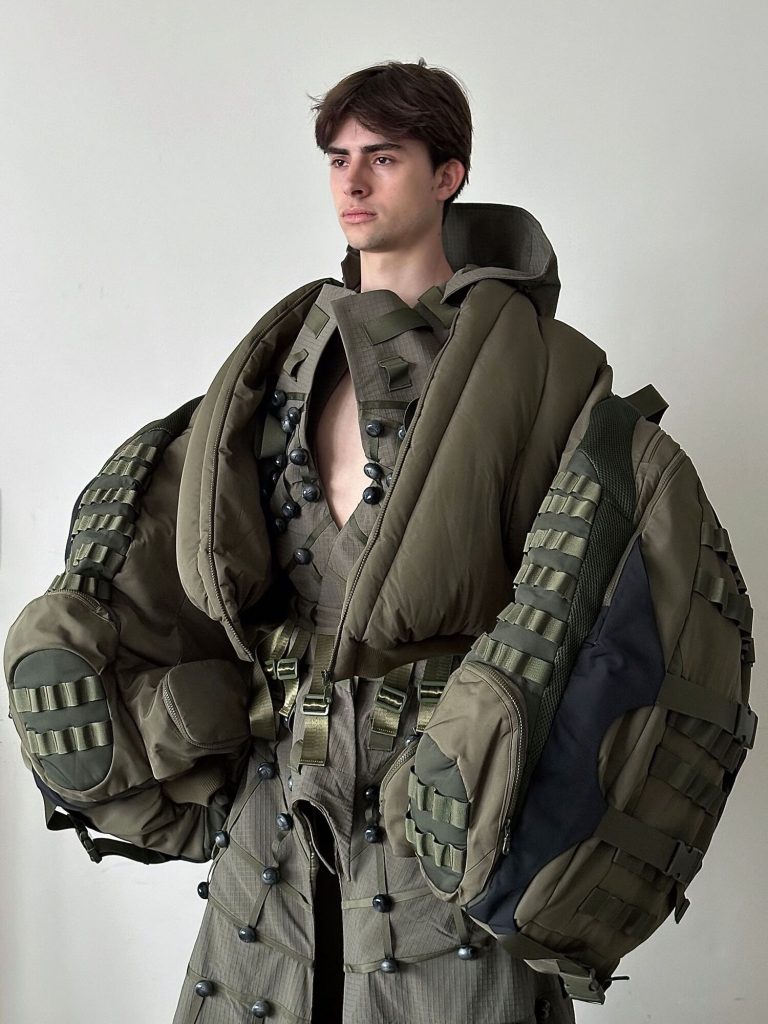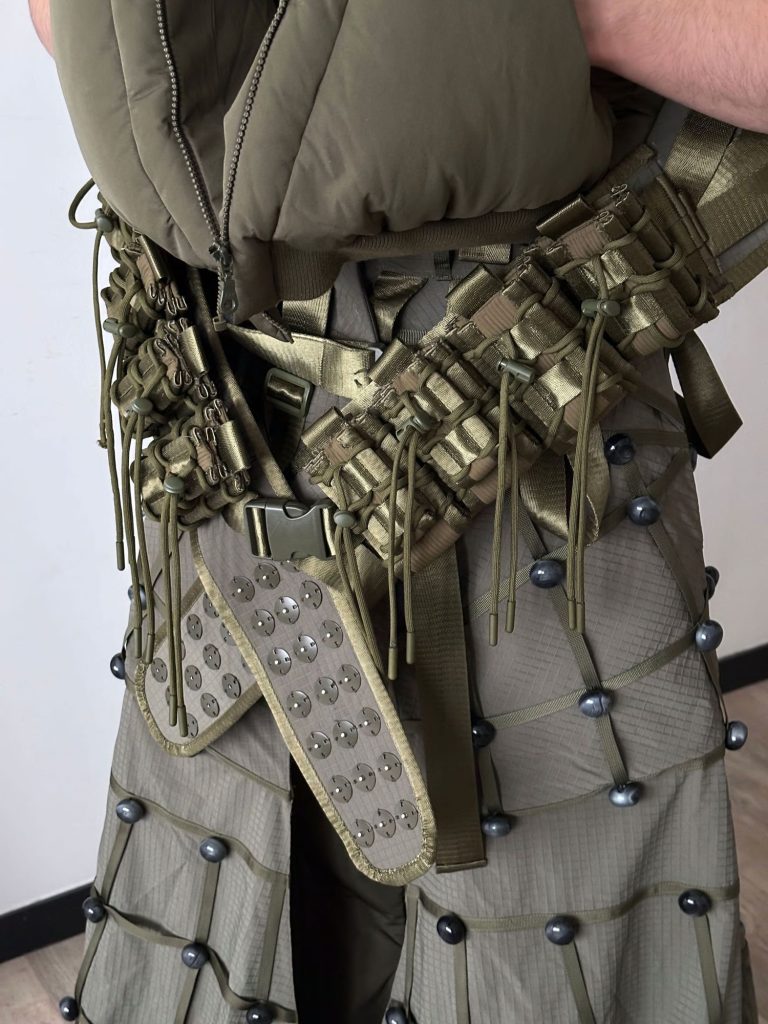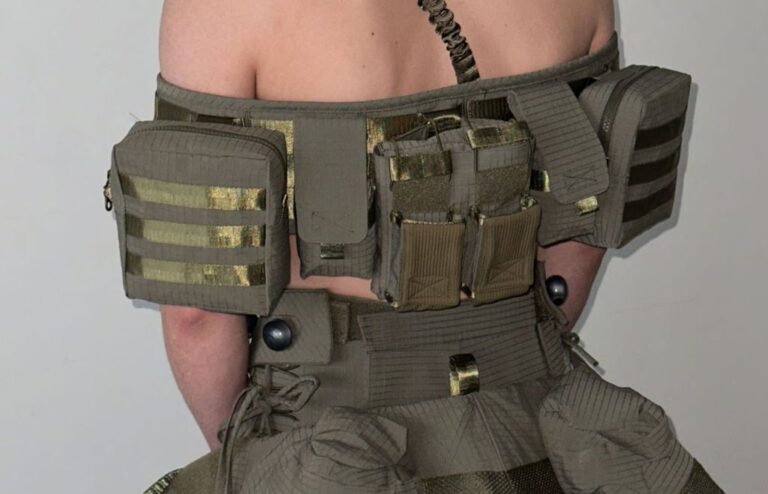


Fashion isn’t just about adornment for Aojie Rou – it’s an act of defiance, a mirror of inner turmoil, and sometimes, a cry for protection. What if a wedding dress could guard against explosions? What if clothes could channel the weight of war, displacement, and gendered expectations? In this conversation, Aojierou challenges us to rethink the boundaries of fabric, identity, and emotion – proving that sometimes, the boldest fashion statements are born from vulnerability.
hube: Your collections often challenge traditional gender norms through fashion. How do you balance pushing boundaries with maintaining a strong sense of cultural respect in your designs?
Aojie Rou: When I design, I usually first decide whether the collection is for men or women and proceed from there. At the same time, I blur the boundaries between the sexes because I don’t think people should be limited in their clothing choices by gender. The only thing I need to consider is the design requirements related to different body shapes and organs.
h: In your collection WHAT IF THE WAR NEVER ENDS, you talk about the lingering fear and impact of war on ordinary people. How did you translate these heavy themes into the aesthetics of your designs, and what role do you believe fashion plays in processing collective trauma?
AR: This collection is actually an extension of an idea I had five years ago. At that time, I was studying in Canada, and there were frequent school shootings in North America, which made me feel very scared. The school suggested students buy clothes resembling bulletproof vests for protection, which inspired me to research military supplies. I found it absurd for ordinary people to need such hard and heavy garments in daily life.
Now, with many countries around the world at war, I feel deep sadness. I incorporated this emotion into my designs, using heavy and uncomfortable clothing to evoke the pain and fear war brings to people.

